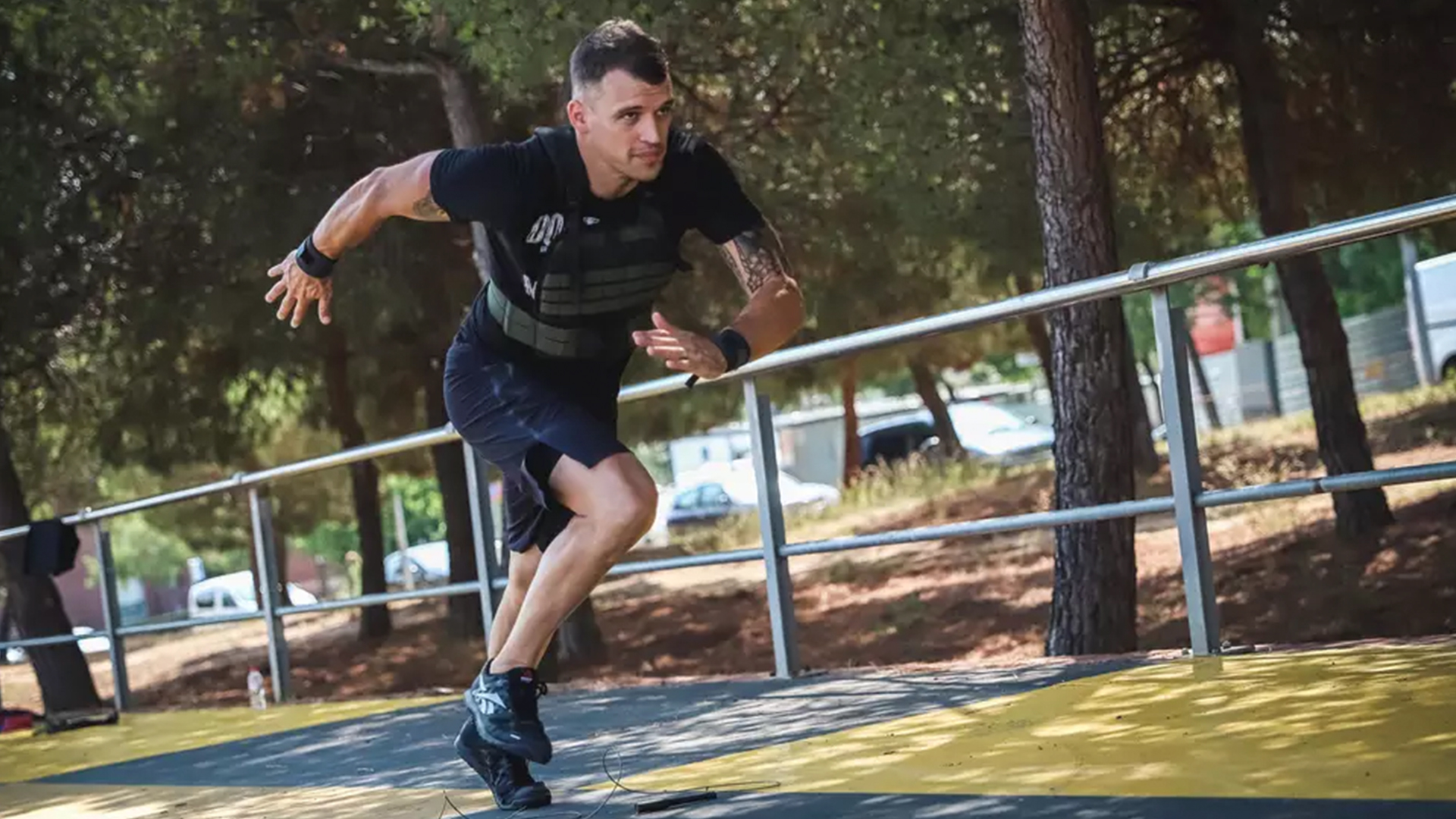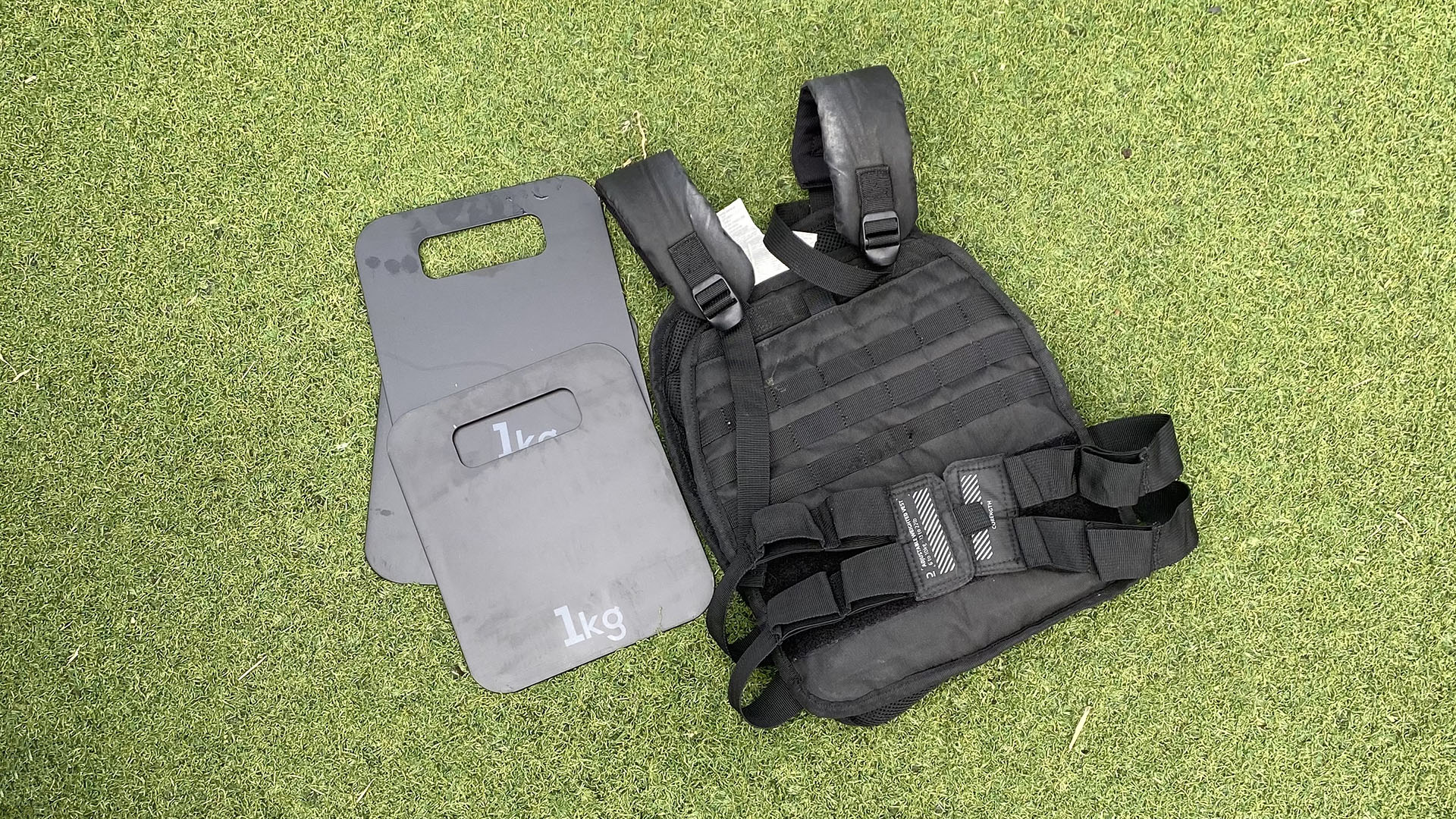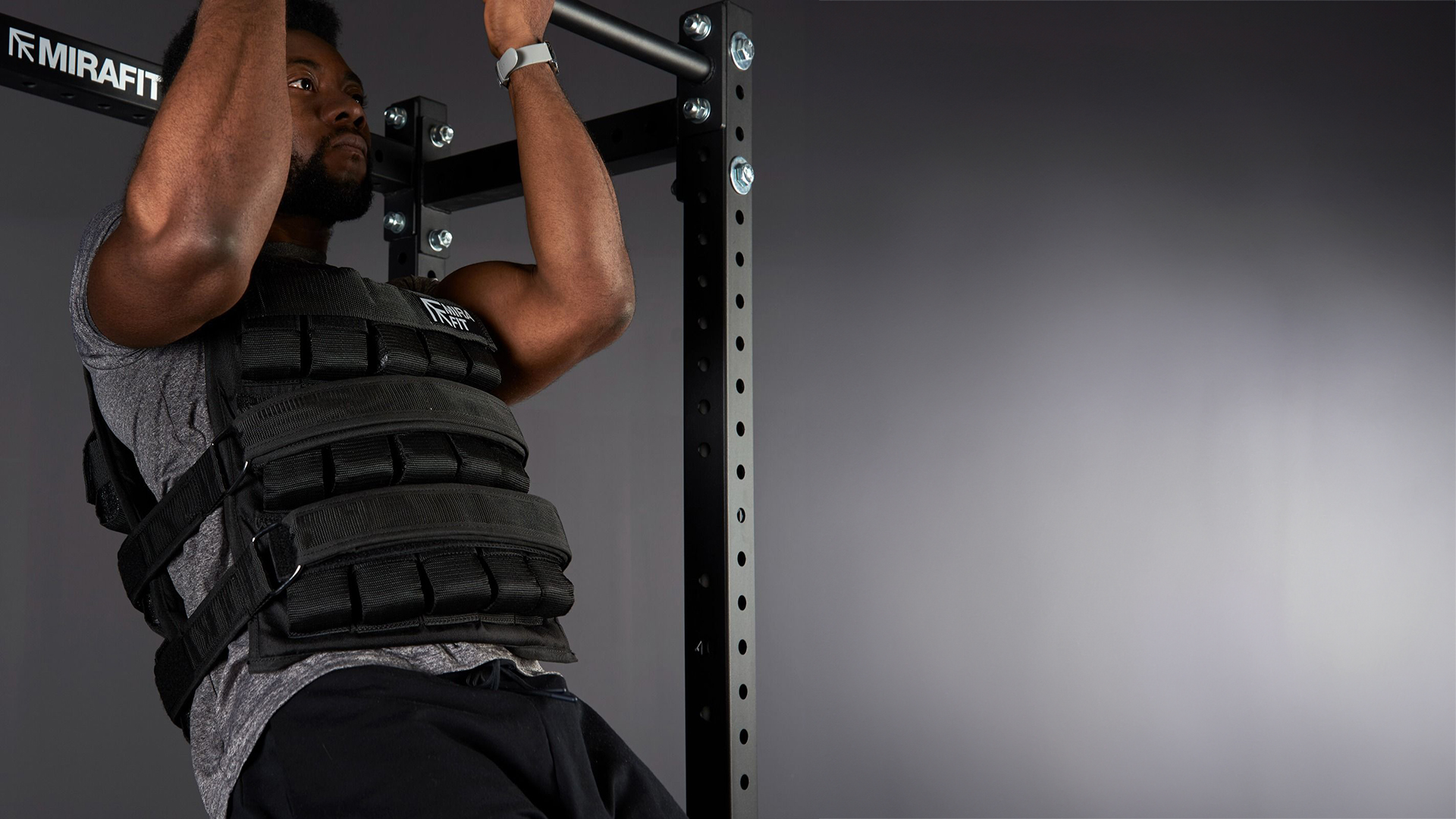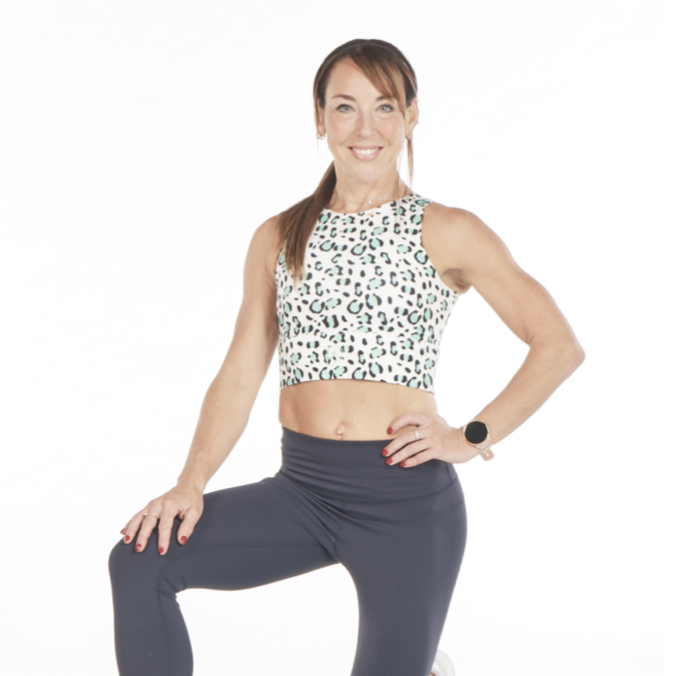I ran 5k with a weighted vest for 28 days – here’s what happened
What does wearing extra weight during cardio exercise do to your body? I donned a weighted vest to find out


If there’s one thing I’ve learned in my 20-year fitness journey, it’s that running is good for my body and mind. Think coffee followed by a run with a podcast—and until then, it’s best not to talk to me. Not only does running keep my body lithe and lean but it also improves my mood, my creativity and sleep. To me, daily running is my superpower.
I’ve run Parkruns, the whole running club gig, and even marathons. I was once a very serious runner. Nowadays, I have to fit it in with the kids and make things more time efficient, so I’m always thinking of new ways to ramp up my intensity and keep things interesting.
I’ve done track work, hill sprints, interval training - you name it. But one thing I hadn’t done was the weighted vest. So, from 8 April to 6 May, I added a weighted vest to my daily 5k run routine. Here’s what happened over those 28 days and what I learned from the experience.
The right tool for the job
As the name suggests, a weighted vest is a sleeveless gilet-looking top laden with plates or other materials like sand that you hook over your body. More accessibly priced models often come with sand-filled pockets, while more sophisticated ones can have removable metal plates to adjust the weight of the vest.
Some of the benefits of wearing one include improved strength, endurance, balance and cardiovascular fitness. Experts also suggest using a weighted vest will help build thicker and stronger bones, which is something I need to think about as I get older (by the time we reach age 40, we slowly begin to lose bone mass) as well as intensify your workout and therefore burn a ton more calories. I’m all for all of this - so the task of finding the right weighted vest is on.
After trawling through recommendations and online reviews, I learned that when looking for a vest, you need to ideally find one that:
- Weighs no more than 5-10% of your body weight
- Distributes the weight around the vest as best as possible
- Has removable weights so you can adjust the load
My final buy was one from Decathlon. It fitted all the necessary criteria for a reasonable price and weighed around 6kg (approx. 13 lbs), which worked well with my 57kg (approx. 125 lbs) frame.
Get all the latest news, reviews, deals and buying guides on gorgeous tech, home and active products from the T3 experts
The Corength Adjustable Weight Training Vest (retailer link) comes in around £59.99/ AU$115.08/ $75.08 is also adjustable and comes with four 1kg weight plates, which takes the vest up to 10kg. It has lots of straps and velcro to ensure a snug fit. And so it began. I’d found my perfect match, and I stepped out for my first 5k.

Week 1
The first week was full of trial and error. Based on my previous research, I knew I had to incorporate the weighted vest progressively. Even as an experienced runner, I knew that if I went too hard too fast, I’d risk injuring myself or burning out.
Used to anything from 5km runs to 10km daily, I started the week with daily 2km runs at pace, followed by a 2-minute walk, followed by another 2km at pace and a walk. This helped me get used to the intensity day by day, as well as the weight and feel of the vest.
As I’ve been running and strength training regularly for years, using the vest didn’t feel too taxing on my joints, but I carried on focusing on good form and easing in gently. I also took note of any aches and pains, mainly in my glutes and calves. Luckily, I experienced zero joint pain—just DOMS (Delayed Onset Muscle Soreness), so lots of post-workout stretching was required. I also found a 1km walk cool down helpful.
During week one, I continued alternating the 2km running and 2-minute walks until I hit my 5km. By the end of the week, this walk/run protocol felt pretty easy, and I was ready to ramp up the intensity.
Week 2
Week two was eye-opening. I was more comfortable with the weighted vest, so I decided to add another 1kg and set my timer for 20 minutes of non-stop running before a 90-second break and then going again until I hit my 5km. Training this way while wearing the vest made me sweat profusely and my training hit a 9/10 on the intensity scale. Again I experienced zero joint pain but some days I felt slow and sluggish. I’m sure I wasn’t, but I could definitely feel the weight of the vest dragging me down.
Week 3
The first thing I learned in week three is that running non-stop with a weighted vest is hard. During every run, my glutes were screaming, yet I pushed through, finishing most of my 5kms around the 30-minute mark. With my usual time of around 26 minutes (or so), the vest was most certainly adding minutes to my time. For the rest of the week, I carried on just running 5km straight. A short yet taxing session that left me with extremely heavy legs for the rest of the day.
Week 4
Annoyingly, I had to remove my additional kg and reduce the vest to 6kg this week. Two days in, I felt a very slight twinge on my left knee—let’s just say that I was not prepared to get injured by an additional 1kg, so out it came.
With the weight out, the pain subsides, and I feel like I’m super light and fast despite still wearing the vest. I’m surprised—1kg isn’t much—but then again, it clearly is. I’m enjoying my runs much more at this weight, yet I add the kg back in for a few extra walks when on my under-desk treadmill.

What happened after?
My first run without the vest, and I felt like I was flying. The weighted running had made my morning runs feel so much easier again. Even hill sprints felt like a breeze.
However, the most interesting learning this week wasn’t my speed increase; it was that I missed wearing the vest, which is why I started incorporating it into my running and gym routine.
From a push-up to strengthen my upper body to a squat to build my legs and glutes, it’s not only given my running a boost but it's refreshed even the most monotonous workout routines - and has me firing on all cylinders mentally and physically. I like it a lot.
The results
More strength and endurance, more calorie burn, and more cardiovascular health—these are just some of the benefits associated with weighted running, and I experienced all of them.
Throughout the challenge, my weight also went down by a kilo, and I looked and felt so much leaner. My cardiovascular fitness improved and I felt faster when I ran without the vest again - but like I said I missed it.
Going forward, I’ve decided to keep the vest on for my shorter 5 - 7kg runs and keep it off for my speed and hill sessions, which will keep my fast-twitch muscle fibres alive and allow me to feel the speed in my legs, which is what I love.
I’ve also decided to wear it as much as I can when on my home desk treadmill - this isn’t a fast walk anyway, but simply a way of keeping me moving whilst working away.
Overall, the weighted vest has given my training a new lease of life and helped me out of a plateau with my running and my weight. I’m usually very consistent when it comes to the scales and my runs, and it’s almost given me a new motivation to push myself as much as possible. If I’m moving anyway I may as well make it that little bit harder, no?
Would I recommend it to others?
Absolutely. Training with a weighted vest was a fun experiment that had its benefits. If you’re short on time and want to maximise calorie burn, it’s great. If you are training for a race and want to increase your speed, it’s also great, but I would say continue training at speed without the vest but incorporate it into the lower and slower endurance runs.
I did feel pretty sluggish with the vest on and equally a little slow, which is why I’m back to training hills and on the track a few days a week without it.
If you want to add more weight to your at-home resistance training, it can also be an excellent tool for making many exercises more demanding, especially if you don’t have much space for other home gym equipment like dumbbells, barbells, or kettlebells.

Lucy Miller is a journalist, Level 3 Personal Trainer, Nutritional Advisor and Children’s Fitness Specialist. She holds fitness qualifications from NASM Training and Premier Training International and has been a fitness journalist and fitness (and cover) model for over 20 years. Since going freelance in 2014, Lucy left Men’s Fitness Magazine to write for an abundance of top consumer titles such as Women’s Health, Women’s Fitness, Waitrose, The Times, The Guardian and Runners World.
She’s also extremely passionate when it comes to educating others about health and physical activity and loves inspiring and working with children and adults to help make fitness fun, sustainable and accessible. In her spare time, Lucy is ever the sportswoman. Once a national gymnast, having won three national titles, she has also run a handful of marathons around the world and loves to test her physical and mental side with daily running and gym sessions, not to mention ballet, bootcamp, boxing and TRX.